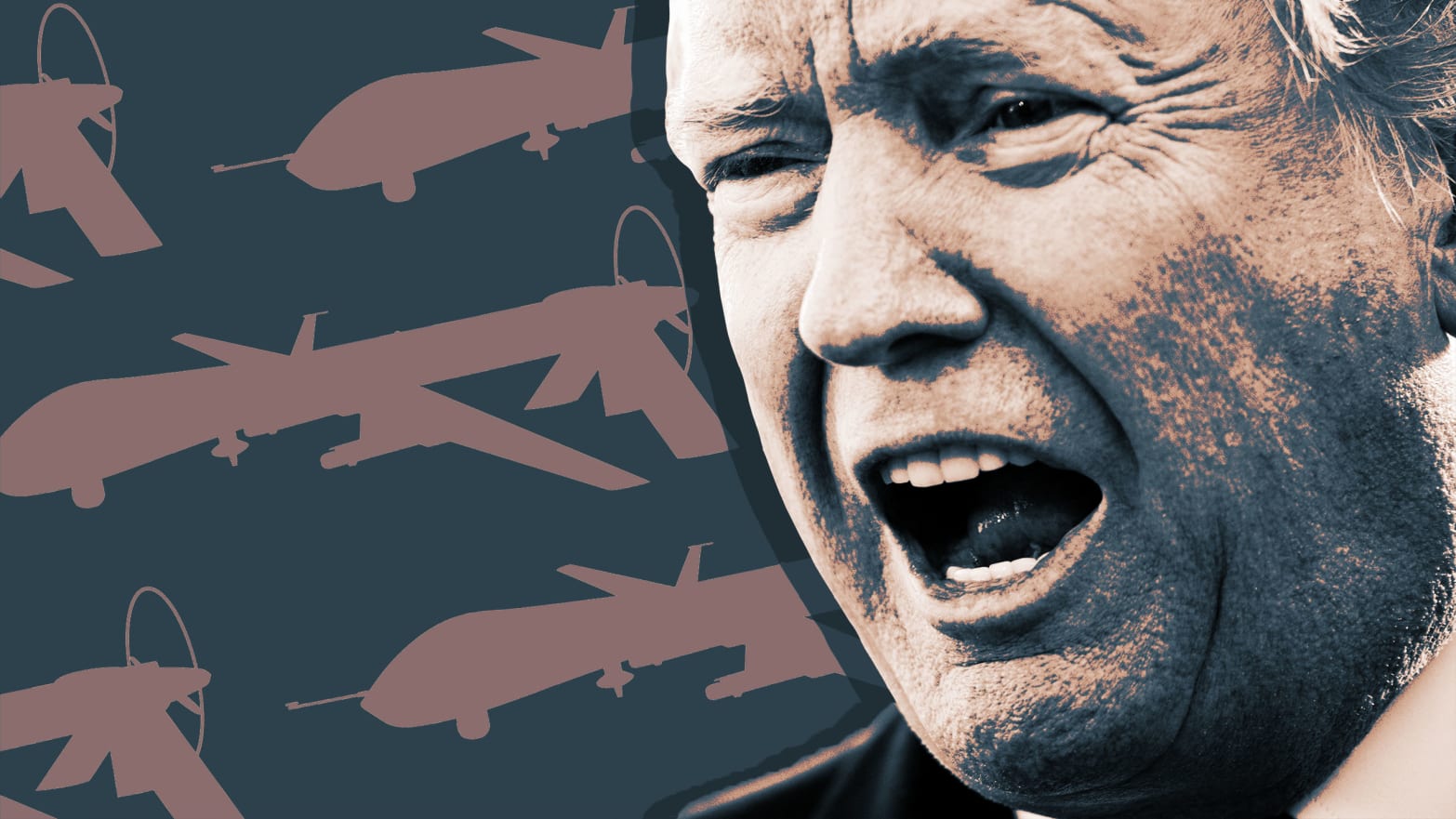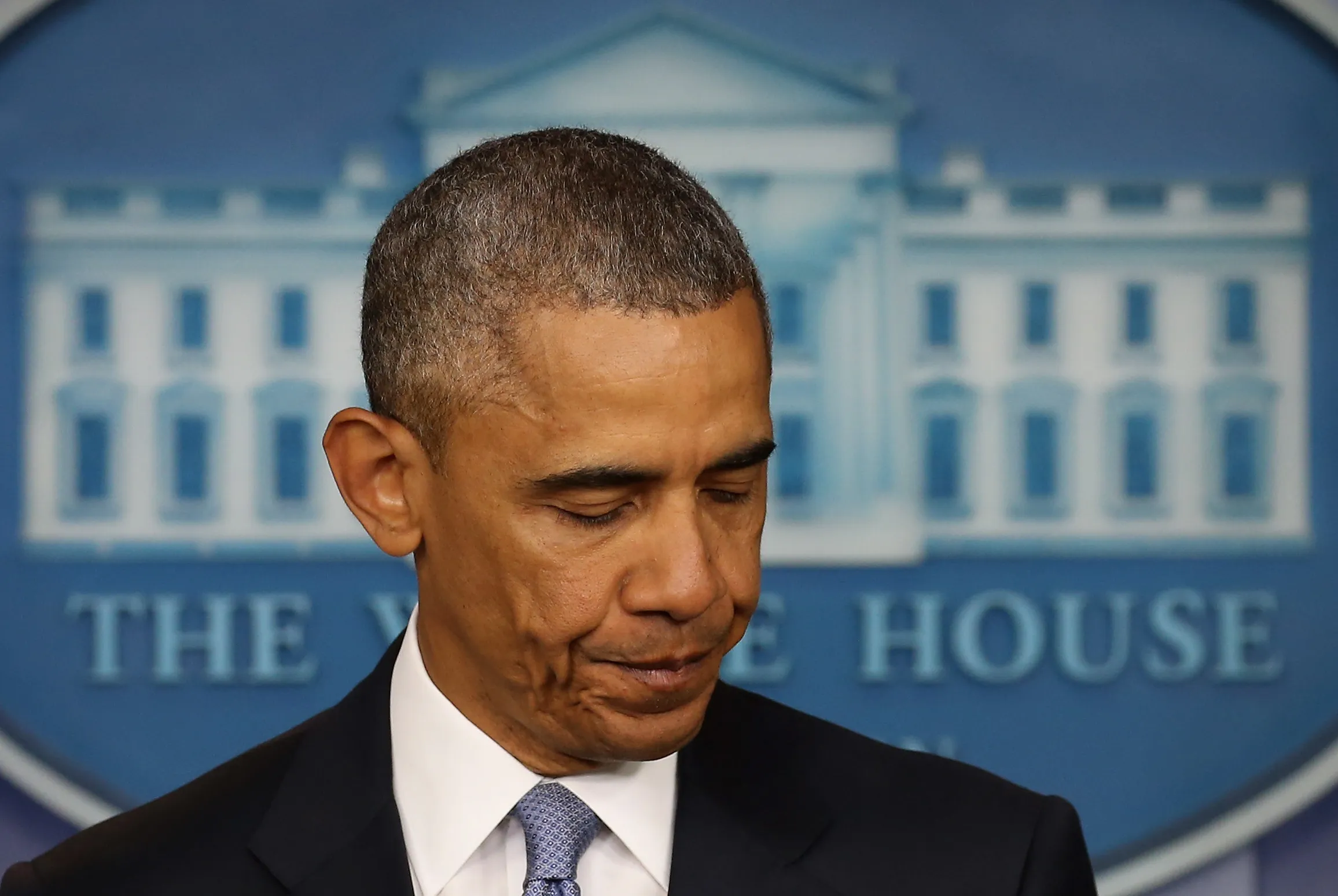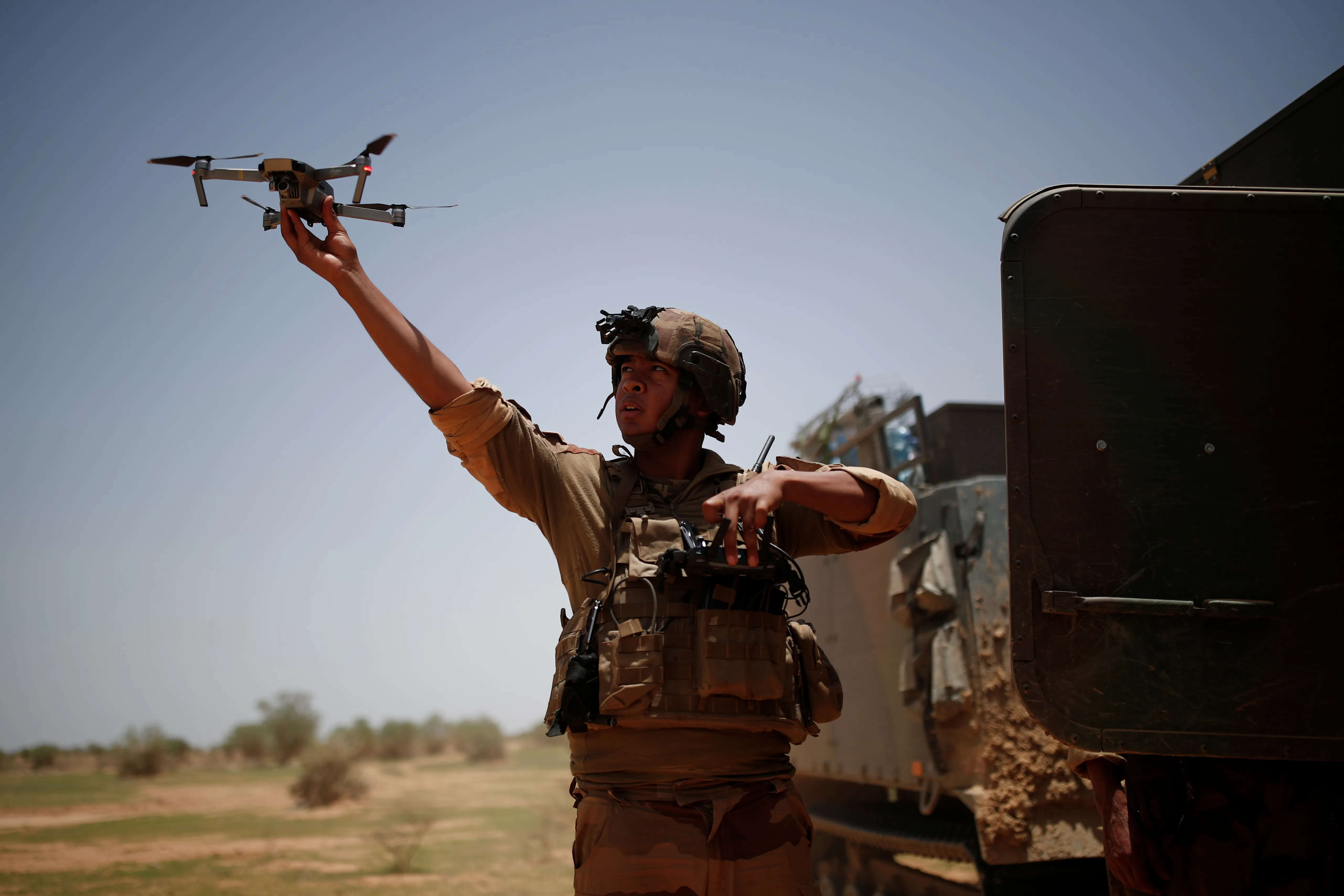Introduction
Welcome to our article on “How Many Drone Strikes Did Trump Do?”. In this piece, we will delve into the controversial topic of drone strikes and provide an overview of the Trump administration’s approach to this military strategy. Drone strikes have been a subject of debate and scrutiny due to their potential impact on national security, civilian casualties, and the ethical implications of targeted killings.
The use of drones for military operations became more prevalent during the Obama administration, with a significant increase in the number of drone strikes compared to previous presidencies. As President Trump took office in 2017, there was anticipation about how he would continue or modify the drone strike policy established by his predecessor.
In this article, we will explore the differences between Obama and Trump’s drone strike records, analyze the impact of Trump’s drone strike campaign, and shed light on the controversies surrounding this strategy.
It is important to note that the information presented in this article is based on available data and public records. Due to the nature of drone strikes and their classified nature, there may be limitations to the accuracy and comprehensiveness of the information provided. Nevertheless, we aim to present a balanced analysis and provide insights into the drone strike policies during the Trump administration.
Join us as we delve into the complexities of drone strikes and examine how they played out during the Trump administration. Let’s explore the numbers, controversies, and implications of this military strategy in the following sections of this article.
Overview of Drone Strikes During the Obama Administration
During his two terms in office, former President Barack Obama significantly expanded the use of drone strikes as a means of counterterrorism. Under his administration, drone strikes became a key component of the United States’ military strategy, particularly in regions such as Pakistan, Yemen, and Somalia.
Obama’s drone strike campaign aimed to target high-value terrorist targets and disrupt the operations of extremist groups like Al-Qaeda and the Taliban. Proponents of the strategy argue that drones provide a more precise and targeted approach compared to traditional military operations, minimizing the risk of collateral damage and protecting the lives of U.S. troops.
However, critics raised concerns about the legality and ethics of drone strikes, particularly when it came to the issue of civilian casualties. The use of unmanned aircraft in targeted killings, carried out remotely, raised questions about accountability, due process, and the violation of national sovereignty in countries where strikes were conducted without explicit consent.
According to data compiled by various organizations, the Obama administration conducted a considerable number of drone strikes during its eight years in power. Estimates suggest that the number of drone strikes under Obama exceeds those of his predecessors, with a significant focus on regions where extremist groups were most active.
It is important to note that the exact number of drone strikes and the casualties they caused have been subject to some variability in reporting. Different organizations may provide slightly different figures, depending on their sources and methodologies of data collection. However, the overall trend indicates a substantial increase in the use of drones during the Obama administration.
While the Obama administration emphasized the importance of transparency and adhering to strict guidelines for drone strikes, concerns persisted regarding the lack of transparency and accountability in certain cases. Instances where strikes resulted in civilian casualties or targeted individuals who were not directly involved in terrorism generated international criticism and accusations of violating international humanitarian law.
In the next section, we will examine the approach of the Trump administration when it comes to drone strikes and analyze how it compares to Obama’s record. Join us as we dive into the specific policies and actions of the Trump administration in the realm of drone strikes.
Trump’s Drone Strike Policy
Upon assuming office, President Donald Trump inherited the drone strike program established by his predecessor, Barack Obama. While Trump vowed to take a tough stance against terrorism, he also expressed his desire to revise and refine the drone strike policy to prioritize the protection of American interests.
During his tenure, the Trump administration maintained the use of drones as a vital tool in its counterterrorism strategy. However, there were some notable changes and shifts in approach compared to the previous administration.
One significant shift was the removal of certain restrictions and guidelines surrounding drone strikes. President Trump sought to delegate more authority and decision-making power to military commanders on the ground, giving them greater discretion in carrying out strikes without seeking permission from higher-ranking officials.
Additionally, there were reports of an increase in the frequency of drone strikes during the early years of the Trump administration. The administration deemed it necessary to ramp up military operations against extremist groups like ISIS, specifically in regions such as Syria and Afghanistan.
Another notable aspect of Trump’s drone strike policy was his focus on countering Iran’s influence in the Middle East. The administration escalated tensions with Iran and targeted high-ranking Iranian military officials through drone strikes, most notably leading to the killing of General Qasem Soleimani in January 2020.
However, it is important to highlight that the Trump administration faced its share of controversies and criticism regarding its drone strike policy. The lack of transparency and accountability in cases where civilian casualties occurred became a subject of heightened scrutiny and concern.
Moreover, the aggressive approach towards drone strikes and a more relaxed approach to limiting civilian casualties raised questions about the potential erosion of international norms and ethical considerations.
Despite these criticisms, the Trump administration maintained its commitment to using drone strikes as a critical tool in combating terrorism and protecting American interests. The policy set forth under the Trump administration faced its fair share of challenges and complexities, which we will further explore in the next section.
Join us as we analyze the trends and outcomes of drone strikes during the Trump administration, comparing them to the policies and results under the Obama administration. Discover the controversies surrounding Trump’s drone strike campaigns and their impact on national security.
Analysis of Drone Strikes under the Trump Administration
The drone strike policy under the Trump administration exhibited some significant differences compared to the approach taken by the Obama administration. As we delve into the analysis of drone strikes during Trump’s tenure, it becomes apparent that certain trends and patterns emerged.
Firstly, there was an increase in the number of drone strikes during the early years of the Trump administration, reflecting a more aggressive approach to combating extremist groups. This ramp-up in military operations was particularly evident in countries like Afghanistan and Syria, where the administration sought to diminish the influence of ISIS and other terrorist organizations.
However, this surge in drone strikes led to concerns about the potential for increased civilian casualties. Reports emerged suggesting that the relaxed restrictions and guidelines on targeting may have contributed to an uptick in unintentional harm to non-combatants.
Furthermore, the decision to target key Iranian military officials, most notably the killing of General Qasem Soleimani, demonstrated a more direct and confrontational approach in dealing with perceived threats. These actions, however, escalated tensions in the region and sparked debates about the legality and potential repercussions of targeted killings.
Despite the increased frequency of drone strikes, some critics argue that the Trump administration failed to provide clear and comprehensive evidence of the strategic impact of these operations. Questions were raised about the efficacy and long-term effectiveness of the drone strike campaign in achieving its goals.
Another aspect worth analyzing is the impact of Trump’s drone strikes on national security. Proponents argue that these strikes disrupted terrorist networks and prevented potential attacks on the United States and its allies. The elimination of high-value targets, such as ISIS leaders, was seen as a significant blow to the organization’s operational capabilities.
However, critics argue that the civilian casualties resulting from drone strikes may have inadvertently fueled extremist propaganda and recruitment efforts. The loss of innocent lives can generate resentment and anger among local populations, potentially becoming a recruiting tool for extremist groups.
It is crucial to evaluate the outcomes and consequences of drone strikes holistically, considering both their short-term tactical successes and the potential long-term ramifications. The analysis of Trump’s drone strike policy brings these factors into focus, highlighting the need for a balanced approach that prioritizes both national security and ethical considerations.
As we move forward, we will compare and contrast the drone strike records of the Obama and Trump administrations, delving into the controversies and debates surrounding these campaigns. Let us continue our exploration to gain a comprehensive understanding of the impact and implications of drone strikes carried out under President Donald Trump.
Comparing Obama and Trump’s Drone Strike Records
When comparing the drone strike records of former President Barack Obama and President Donald Trump, several notable differences and trends emerge. While both administrations utilized drone strikes as a counterterrorism tool, there were variations in their approach and the number of strikes conducted.
During his tenure, Obama significantly expanded the use of drone strikes as a cornerstone of his counterterrorism strategy. Estimates indicate that the Obama administration conducted hundreds of drone strikes, primarily targeting regions such as Pakistan, Yemen, and Somalia, where extremist groups like Al-Qaeda and the Taliban were active.
On the other hand, the Trump administration continued to utilize drone strikes but appeared to take a more aggressive stance. There was an increase in the frequency of strikes during the early years of the Trump presidency, often targeting regions such as Afghanistan and Syria to combat organizations like ISIS.
One noticeable difference between the two administrations was the level of transparency and public reporting on drone strikes. The Obama administration made efforts to provide some level of transparency, releasing annual reports and providing information on the number of strikes and estimated civilian casualties. In contrast, the Trump administration reduced the public reporting on drone strikes, leading to concerns about accountability and lack of transparency.
Another significant distinction was the targeting of high-ranking officials. While Obama authorized targeted killings, including the operation that led to the death of Osama bin Laden, the Trump administration targeted key Iranian military officials, most notably General Qasem Soleimani. These actions sparked worldwide debates and raised questions about implications on international law and norms.
It is important to consider that estimating the number of drone strikes and their impact is complicated due to the classified nature of this information. Reporting from different sources may vary, and data on civilian casualties may not be fully accurate.
Furthermore, both administrations faced criticisms and controversies related to drone strikes. Obama’s drone strike policy was scrutinized for potential violations of national sovereignty and the increased risk of civilian casualties. The Trump administration faced similar criticisms, with concerns around potential increases in civilian casualties and the relaxed restrictions on targeting.
Ultimately, comparing the drone strike records of Obama and Trump demonstrates an evolution in the use of this strategy over time. While Obama expanded its use and established certain guidelines and transparency measures, the Trump administration took a more aggressive approach, potentially leading to higher numbers of strikes and increased concerns about civilian harm.
As we continue to explore the impact and controversies surrounding drone strikes, we will delve deeper into specific cases and their implications in the following sections. Join us as we navigate the complexities of this issue and shed light on the controversies and debates surrounding drone strikes under both administrations.
Controversies Surrounding Trump’s Drone Strike Campaign
The drone strike campaign under the Trump administration was not immune to controversies and debates. The aggressive approach and policy shifts implemented by the administration raised concerns and sparked discussions on a range of issues related to legality, ethics, and unintended consequences.
One of the primary controversies surrounding Trump’s drone strike campaign was the potential increase in civilian casualties. As strike frequency escalated, reports emerged suggesting that the relaxed restrictions on targeting may have resulted in a higher number of unintended civilian casualties. Critics argued that this not only violated the principles of proportionality and distinction in international humanitarian law but also risked inflaming anti-American sentiment.
Furthermore, concerns were raised about transparency and accountability. The Trump administration curtailed public reporting on drone strikes, reducing the level of information available to the public. This lack of transparency created challenges in assessing the impact and efficacy of the strikes, leading to criticisms that accountability and oversight were being compromised.
Another controversial aspect of Trump’s drone strike campaign was the decision to target high-ranking Iranian military officials, most notably the assassination of General Qasem Soleimani. This action escalated tensions between the United States and Iran, resulting in fears of further conflict in the region. Critics argued that the targeted killing violated international law and destabilized the fragile balance of power in the Middle East.
The relaxed guidelines and increased discretion given to military commanders also raised concerns regarding the erosion of checks and balances. Critics argued that the delegation of authority without sufficient oversight placed significant power in the hands of individual military personnel, potentially leading to abuses or unintended consequences.
In addition to the specific controversies surrounding Trump’s drone strike campaign, broader debates persisted regarding the long-term effectiveness and strategic impact of drone strikes. Critics argued that while these strikes may have disrupted immediate threats, they did not necessarily address the root causes of terrorism or contribute to long-term stabilization efforts. The potential radicalization and recruitment opportunities created by civilian casualties were cited as factors that could undermine the overall success of the strategy.
It is important to note that these controversies and debates surrounding Trump’s drone strike campaign are not exhaustive, and opinions on the matter vary. Nevertheless, they underscore the complex nature of utilizing drones as a military tool and highlight the ethical, legal, and strategic considerations involved.
As we proceed, we will explore the impact of Trump’s drone strikes on national security and delve into the comprehensive analysis of his administration’s approach to drone strikes. Join us as we navigate the intricate landscape of drone warfare and unpack the complexities and controversies surrounding this contentious issue.
Impact of Trump’s Drone Strikes on National Security
Assessing the impact of Trump’s drone strikes on national security requires careful examination of both their immediate and long-term effects. The administration portrayed these strikes as a critical tool in combating terrorism and protecting American interests. However, the consequences of these actions are complex and multifaceted.
Proponents argue that the targeted elimination of high-value individuals disrupted the operational capabilities of extremist groups and diminished their ability to carry out attacks. The elimination of major figures, such as ISIS leaders, was believed to weaken the organizational structure and hinder the planning of terrorist activities.
Additionally, supporters contend that the use of drones allowed for precision targeting, minimizing the risk to American troops and reducing the need for large-scale military operations. By conducting targeted strikes, the Trump administration sought to prevent potential threats and dismantle terrorist networks while minimizing the risk to American lives.
However, critics raise concerns about the potential unintended consequences and long-term impacts of drone strikes on national security. One major concern is the potential radicalization and recruitment opportunities that arise when civilian casualties occur. The loss of innocent lives can create resentment and anger within affected communities, potentially fueling anti-American sentiment and providing propaganda material for extremist groups.
Furthermore, the use of drones in targeted killings outside of traditional war zones raises questions about the erosion of international norms and the potential violation of national sovereignty. The legality and ethical implications of drone strikes remain subjects of intense debate and can have broader implications for international relations and cooperation.
It is essential to consider the broader context of national security. While drone strikes may disrupt immediate threats, addressing the root causes of terrorism and promoting stability require comprehensive approaches that go beyond military tactics. Socioeconomic factors, political grievances, and diplomatic efforts also play crucial roles in national security strategies.
Moreover, the strategic impact of drone strikes must be evaluated in light of potential unintended consequences. Critics argue that the use of drones can be perceived as a symbol of American aggression, potentially motivating new individuals to join extremist organizations or carry out retaliatory attacks.
An effective national security strategy requires a comprehensive understanding of the short-term and long-term consequences of drone strikes. By weighing the potential benefits and risks, policymakers can work towards ensuring that these operations contribute to lasting peace and stability.
As we move forward, we will explore the nuances and complexities surrounding Trump’s drone strike policy, delving into specific cases and their implications. Join us as we examine the wider impact of Trump’s drone strikes on national security, understanding the multifaceted nature of this critical aspect of counterterrorism efforts.
Conclusion
In conclusion, the use of drone strikes as a counterterrorism tool underwent significant developments and controversies during the Trump administration. While building on the drone strike policy established by his predecessor, President Trump’s approach exhibited some distinctive characteristics.
The increase in the frequency of drone strikes and the removal of certain restrictions resulted in a more aggressive and less transparent approach. The targeting of high-ranking Iranian officials, relaxed guidelines, and possible increase in civilian casualties were notable aspects of Trump’s drone strike campaign.
However, the impact and effectiveness of these drone strikes on national security remain subjects of ongoing debate. Proponents argue that the targeting of high-value individuals disrupted terrorist networks and protected American interests, while critics express concerns about unintended consequences, potential radicalization, and the erosion of international norms.
It is crucial to evaluate the strategic impact of drone strikes holistically, considering their immediate effectiveness and long-term implications. Achieving a balance between national security imperatives and ethical considerations is a challenge that requires comprehensive policies and an understanding of the complex dynamics involved in counterterrorism efforts.
While the drone strike records of Obama and Trump differ in various ways, they both highlight the complexities and controversies surrounding this military strategy. The evolving nature of drone warfare calls for ongoing evaluation, transparency, and accountability to ensure that national security objectives are achieved while mitigating potential risks.
As we conclude our exploration of the drone strike campaigns during the Obama and Trump administrations, it is vital to continue discussing and analyzing the broader implications and ethical considerations surrounding this contentious issue. Only by doing so can we strive toward a comprehensive understanding of the efficacy, consequences, and impact of drone strikes in contemporary warfare.

























